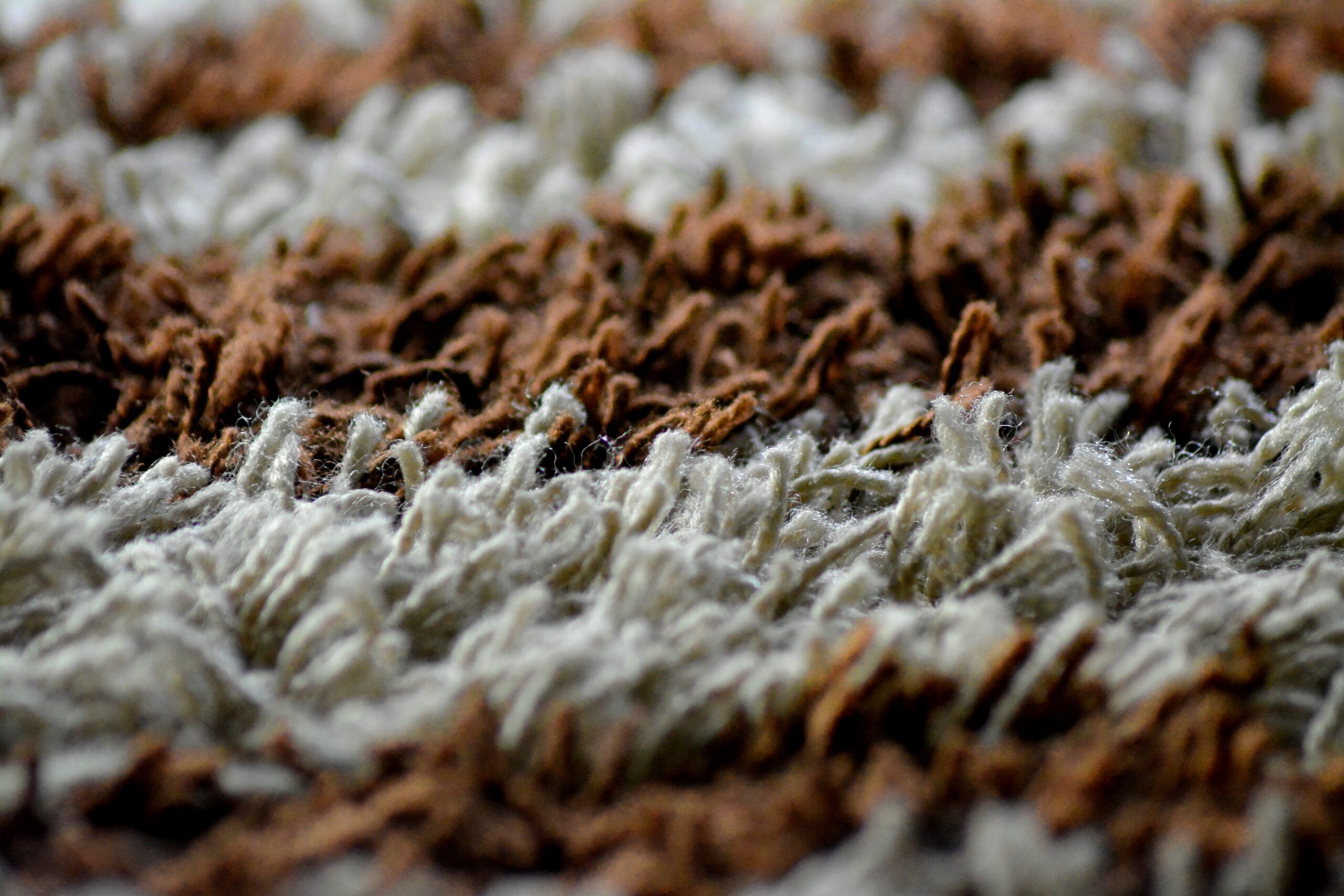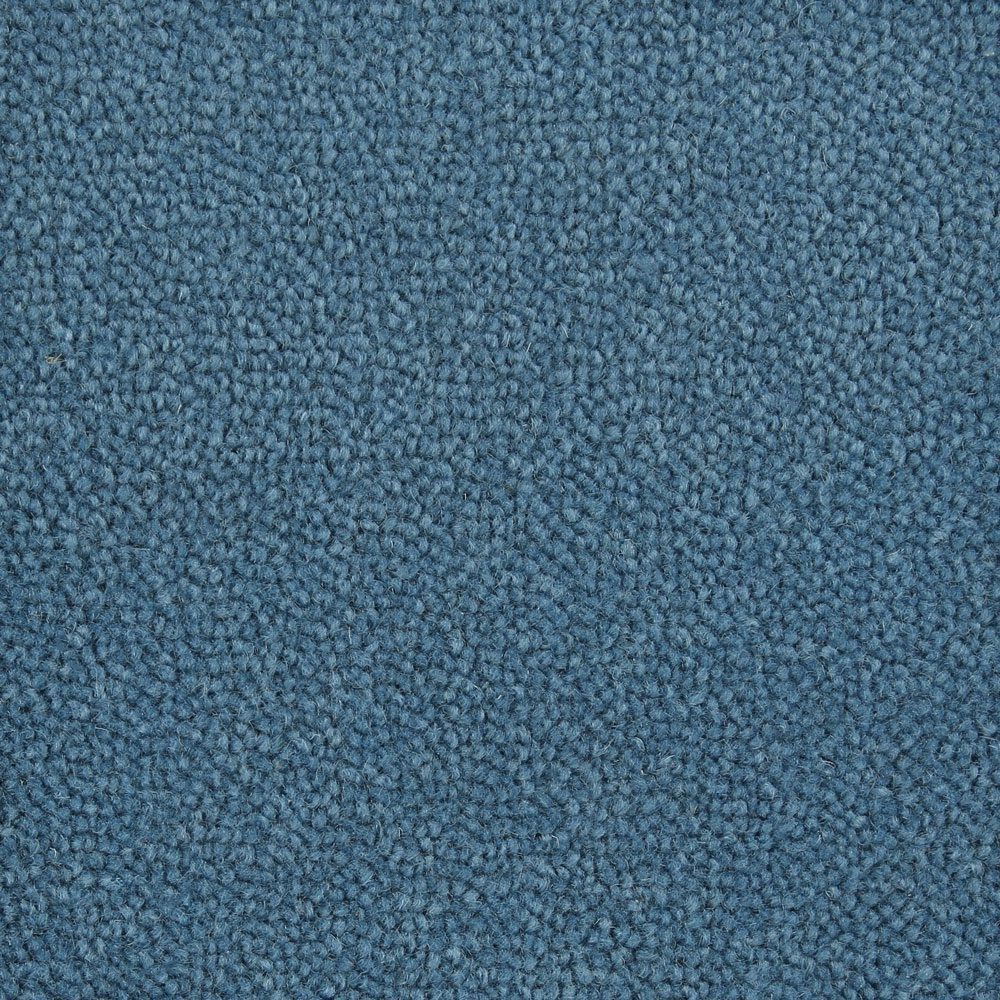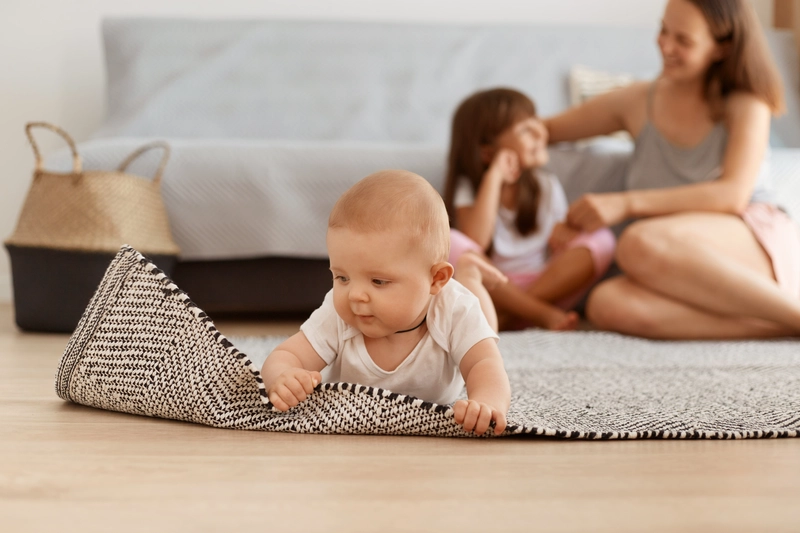Everyone LOVES the cosy feeling of a plush carpet under their bare feet.
But if you’ve entered a carpet or flooring store, you might have been overwhelmed with your choices and tempted to just point to the first thing that gets your attention.
If you don’t know the first thing about carpets, don’t worry — we’ve got your back!
In this article, we’ll walk you through the different carpet types and how to choose the right flooring.
Carpet Pile Types
A carpet pile refers to how the fibre loops are arranged on the carpet — if they’re cut or left intact.
The carpet pile has the largest effect on how different carpets look and perform.
Below are the types of carpet piles:
1. Cut Pile Carpet
Cut pile carpets are what you imagine when you think of carpets.
This carpet pile has exposed fibres that are sheared off and twisted to make a tufted carpet. The twist prevents the fibres from matting, making it ideal as a whole-house carpet since it blends well.
The twist also results in the fancy look you expect of carpets. This also means a cut pile carpet has more warmth and softness underfoot than other carpets.
Different kinds of cut pile carpets depend on certain factors — such as the angle they were sheared and what treatments were used on the threads before and after they were used as a backing material.
Here are the most popular kinds of cut pile carpets:
- Frieze carpet – A frieze carpet has relatively long fibres that are twisted and kinked, resulting in erratic curls. This cut pile carpet is VERY durable and can hide dirt and wear well. This makes it great for high-traffic areas.
- Saxony carpet – The Saxony carpet is one of the most traditional cut pile carpets, alongside the frieze-cut pile. This cut pile has very soft twisted fibres that stand straight up, creating a fuzzy appearance. However, it’s best for low-traffic areas since it’s prone to wear and tear.
- Velvet carpet – Plush or velvet carpets have short fibres. This type of cut pile also has a very dense texture, which results in a rich and luxurious appearance. They’re also best used for low-traffic areas.
- Textured carpet – A textured cut pile carpet has uneven fibres that undergo a special steam treatment that ensures they remain kinked. This pile is great for mid- to high-level traffic areas since the surface DOESN’T show marks.
- Shag carpet – A shag carpet is a deep pile carpet with long and soft fibres that create a casual and loose appearance. However, this kind of cut pile is NOT as durable as other types of cut pile carpets. A shag carpet is actually quite rare nowadays — however, they were considered a luxury in the 1960s and 1970s.
2. Loop Pile Carpet
Loop pile carpets are also called “uncut carpets” since the whole material is left intact on the surface of the carpet.
These are very durable, easy to clean, and resistant to stains and marks. This makes them great options for heavy-traffic areas like living rooms and family rooms.
A loop carpet can have a level loop or a multi-level loop finish. You’ve probably figured out that a high-level loop pile is a bad idea.
After all, a loop pile with too-high loops means that things can get snagged in them — such as a cat’s claws or a baby’s fingers.
The most popular types of loop pile carpets are:
- Sisal carpet – This hard-wearing carpet is a kind of strong natural fibre from the Sisal cactus plant. A sisal carpet is one of the most durable carpets you can have — it’s even great for the outdoors. However, unlike other carpet types, it can feel rough underfoot and can’t be steam cleaned.
- Berber carpet – The Berber carpet originated in North Africa. This loop pile is another hardwearing carpet that remains popular today thanks to its classic appearance and resistance to damage. This durability is possible due to the short fibres being looped VERY tightly. A Berber pile can have a level or multi-level finish. The looped fibres make this carpet pile a good anti-slip option too.
3. Twist Pile Carpet
A twist pile carpet is also known as a cut pile twist.
Here, the yarn is TIGHTLY twisted, giving it a coarser and more textured finish that makes them look good with plain colours.
Twist pile carpets are also very durable, so they’re great for high-traffic areas.
4. Cut and Loop Pile Carpet
As the name suggests, cut and loop pile carpets are made with both cut and looped yarn.
This combination allows for the creation of geometric designs to add visual interest to your home.
Sculpted and patterned carpets are examples of cut and loop pile carpets. They look trendy and contemporary and still feel soft.
However, a cut and loop pile is normally best for areas that only see LIGHT traffic. A cut and loop pile is also quite vulnerable to changing style trends.
Carpet Pile Height Options
The pile height refers to the length of the visible carpet fibres. This can be divided into three categories:
1. Low Pile Carpet
A low pile carpet has fibres that are under 1/4 inch.
They’re durable and resistant to dirt — making them great for high-traffic places or areas where pet hair or dirt can be a concern.
A Berber carpet is an example of a low pile LOOP carpet, while a velvet carpet is a low CUT pile carpet.
2. Medium Pile Carpet
Medium pile carpets are a middle ground between comfort and durability. They have longer fibres measuring 1/4 inch to 1/2 inch.
They’re more prone to catching debris — but they’re easily cleaned by a vacuum. They can also handle moderate foot traffic.
3. High Pile Carpet
High pile carpets, also known as deep pile carpets, measure around 1/2 inch to 3/4 inch.
They don’t easily show signs of wear, footprints, or vacuum marks. They’re good for adding a touch of warmth to a room or lowering noise levels.
However, they easily collect debris and can be quite hard to clean.
7 Carpet Fibres You Should Try Out
The carpet fibre is the material your carpet is made of. This will affect your carpet’s appearance, feel, and durability.
Below are different types of carpet fibres you can consider:
1: Nylon
Nylon is one of the most durable synthetic fibres on the market, making it ideal for high-traffic areas.
The strong fibres can easily maintain their shape — so you won’t have to worry about vacuum marks and footprints. It’s also very stain-resistant and doesn’t fade.
It can withstand mould and mildew too, so it’s a good choice for basement flooring.
Admittedly, nylon can cause static. But you can just have it treated, so this won’t be a problem.
2: Cotton
Cotton carpets are UNBELIEVABLY soft.
They’re completely organic too — that’s why they’re some of the most expensive floor coverings you can buy.
This carpet fibre is easy to clean — EXCEPT when it concerns stains. It’s also prone to fading.
Because of how high-maintenance cotton is, it’s best to use it in a low-traffic room that also won’t encounter many children or pets.
3: Wool
A wool carpet is another one of the higher-end carpet types you can get. It can cost twice as much as carpets made of synthetic fibres.
Wool is a HIGH-QUALITY fibre that’s quite durable and long-lasting — in fact, it has a high resistance to flames! It’s also relatively stain-resistant.
However, as a natural material, wool can be prone to mould and mildew. As such, you might need to get treated wool or a wool/acrylic blend.
Admittedly, it’s not the easiest type of carpet to maintain.
However, if you can maintain it well enough, it can resist fading and wearing for decades.
Additionally, a wool carpet has naturally coiled fibres, which makes it more resilient than synthetic fibres.
4: Acrylic
This synthetic fibre is great if you want wool but can’t handle the price. Acrylic is also hypoallergenic.
Unfortunately, it wears down more quickly than other carpet fibres.
5: Polypropylene (Olefin)
Olefin is made from plastic, so it’s very water-resistant. That means you can place it in areas that are prone to moisture.
It’s also solution-dyed, meaning it won’t fade even if you put it in direct sunlight. It’s even bleach-cleanable without changing colour.
While all this may sound good, this carpet type isn’t as resilient as nylon ones. It’s also sensitive to friction and MAY have a slightly waxy feeling when you touch it.
6: Polyester
Polyester is a relatively cheaper alternative to nylon — though it’s not as resilient.
It’s resistant to moisture and stain. If you choose a thick carpet pile of polyester, it can be very soft.
You might also be interested to know that lots of polyesters come from recycled materials.
7: Triexta
Triexta is an interesting kind of carpet fibre.
Though it’s synthetic, 37% of it is made from corn! This makes it a great sustainable option.
It’s very similar to nylon and polyester because triexta is also very soft, durable, stain-resistant, and easy to maintain.
However, this type of carpet has very fine fibres and three times the amount of fibres as most carpets, making it VERY dense.
Because of this, it can be quite difficult to push a vacuum through it.
Things to Consider When Buying Carpets for Your Home
Now that you know the basics of the types of carpet piles, pile heights, and fibres, you should know which among them can answer your needs and wants the MOST.
To help, below are things to consider when choosing your new carpet:
1: Space
Of course, the first thing to consider is where you’ll put the carpet. Additionally, you should also keep in mind the activities and traffic patterns in your house.
If you want your carpet in the family room (which sees heavy foot traffic), you’ll want something durable AND easy to clean.
In that case, you can consider a low loop pile carpet made of nylon.
2: Comfort
How comfortable a carpet is should also depend heavily on where you plan to put it.
For instance, you might want to have it in the bedroom, which doesn’t see a lot of foot traffic.
As such, it’s fine to have a high cotton pile carpet to keep the room warm. It can absorb sound too.
But if you’re putting it in the dining room, you don’t need something comfortable enough to fall asleep on.
3: Carpet Patterns and Colours
Carpet style is also important to complement a certain room’s aesthetic.
Woven carpets, which are cut and loop pile carpets, have striking patterns and can be EXTREMELY durable. So, if you’re looking for a woven carpet for stair runners, a flat weave, Axminster, or Wilton carpet can do the trick.
An Axminster carpet has u-shaped tufts that allow for intricate designs while still being high-performance. Meanwhile, a flat weave is a more textured woven carpet.
As for a Wilton carpet, it’s a high-quality and hardwearing cut-and-loop carpet that offers textured effects too.
Choosing among many different styles can be tricky since it’s highly personal.
As such, we suggest bringing home some carpet samples so you can see how they look in the natural light of your house. You’ll also see if it complements the furniture and walls.
4: Maintenance
Carpets are pretty to look at and comfortable to touch, but you should also know how often you’ll need to clean them.
Carpet fibres are normally treated with stain-resistant chemicals so they don’t absorb liquid spills.
However, some will still have more resistance to stains than others.
For instance, stains on a cotton carpet are very difficult to get rid of. As such, it’s best to have it in a room with light foot traffic, where kids and pets don’t frequent.
Alternatively, a low loop pile carpet like Berber is good if you want to have a carpet in rooms with heavy foot traffic, like living rooms.
5: Carpet Backing
Carpet backing is your carpet’s base. There are two types of carpet backing:
- Primary backing – This is where each carpet fibre is attached.
- Secondary backing – This is the barrier between the floor and the carpet padding.
Polyutherane is the most common backing material. After all, it’s affordable and very strong.
However, it’s also very rough, which can damage the baseboards.
Soft plastic is another option. It’s soft but doesn’t do well with moisture.
Meanwhile, jute is a durable material, but it’s NOT always readily available.
Admittedly, carpet backing is not the most important feature when considering the different types of carpet piles, heights, and fibres. But it’s still a good thing to keep in mind.
6: Carpet Padding
Carpet padding is your carpet’s foundation.
Also known as carpet underlay, it has several purposes:
- Make the carpet more comfortable
- Insulate the room
- Absorb noise
- Improve the carpet’s lifespan
Carpet padding is mainly made of one or a combination of three things: rubber, foam, and fibre. Some kinds of padding are:
- Rebonded padding – This kind of padding is very durable — to the point that it can outlast the carpet itself.
- Frothed foam – This is also extremely durable, lasting up to two installations.
- Memory foam – Memory foam is the most comfortable padding, but it’s only good for low-traffic areas.
- Fibre pad – This is admittedly not the most comfortable or durable, but it’s good for high-traffic areas.
- Rubber pad – Rubber pads are great for heavy traffic areas. They’re also a good choice for people with allergies.
7: Price
Of course, the PERFECT carpet type for you will also depend on the price.
If you’re willing to splurge on a bedroom carpet, you can opt for high-end carpet types like wool or cotton.
But a low loop pile carpet like Berber is great if you want the best carpet for heavy foot traffic areas like living rooms.
Or, if you’re paying more attention to the carpet fibre, nylon is good for those rooms — you can choose polyester if you’re on a budget.
The bottom line is that your budget will ultimately determine which particular carpet you’ll get.
What Are the Pros and Cons of Carpets?
As with other flooring types, a carpet also has its pros and cons.
We’ll talk about them below:
Pros of Carpet
We all see a carpet as a luxurious kind of flooring. Here are some specific reasons to love it:
1: Soft
Admittedly, not all types of carpet fibres are soft.
However, every carpet offers some kind of softness. Additionally, it makes your room warmer and more welcoming.
It also softens the edges of your wood floors.
2: Cheap Installation
Any type of carpet (regardless of the carpet pile or fibre) is quite cheap to INSTALL.
Keep in mind that it’s generally not as cheap as installing vinyl planks or laminate flooring. However, it’s way less expensive than most kinds of wood flooring — especially hardwood.
3: Quiet
Any type of carpet can make your home quieter.
It absorbs noises well, which can prevent echoes and muffle footsteps.
4: Hides Dirt
You can EASILY see dirt and debris building up on wood floors.
However, a carpet can hide the mess for a while until you have the time to deal with it properly.
This doesn’t mean a carpet is good for kitchens or mudrooms. But it ensures you don’t have to clean the other rooms daily.
Cons of Carpet
All the pros seem enough to make you want to buy your new carpet soon.
However, below are some cons to consider as well:
1: Easily Wears Down
Carpets cannot be refinished, unlike wood.
Some carpets can last longer than others, especially if you put them in light-traffic areas. However, at the end of the day, you’ll have to replace carpets.
2: Not Easy to Install
A carpet is too complicated to install if you’re untrained.
You shouldn’t attempt to do it since you might end up voiding your warranty if you do it poorly.
Frequently Asked Questions
Now that you know the basics regarding carpets, we’ll answer a few more questions below:
Are Carpets Flammable?
Technically, yes. A carpet is flammable IF it comes in too-close contact with fire. However, it will very rarely ignite on its own.
This is because carpets are typically treated to be fire-resistant, making them self-extinguishing. Their textures also help lower their susceptibility to fire.
But wool is the most fire retardant among the different types of carpet fibres.
Can Carpets Cause Allergies?
Some carpet types MAY cause allergies, but this is normally caused by the chemicals used to treat the pile.
However, what causes allergies in all different types of carpet fibres is the dust and debris (like animal fur) they hide.
As such, it’s always important to NEVER neglect cleaning your carpet.
What Is a Good Pile Density for a Carpet?
A good rule of thumb is to have a carpet pile density value of at least 3,000.
The higher the carpet pile density, the better, since it means it’s of a higher quality. It will also mean that the carpet feels thicker and lusher underfoot.
The carpet pile density is determined by the face weight and pile height.
Conclusion
Choosing the right type of carpet for your home can be confusing and stressful.
After all, you need to be familiar with the types of carpet fibres, pile types, and pile heights.
Alongside that, you should also consider several factors — from the room you plan to put the carpet in to how much your budget is.
However, if you really take your time finding the best carpet type for your wants and needs, you’ll definitely get that smooth finish.

































